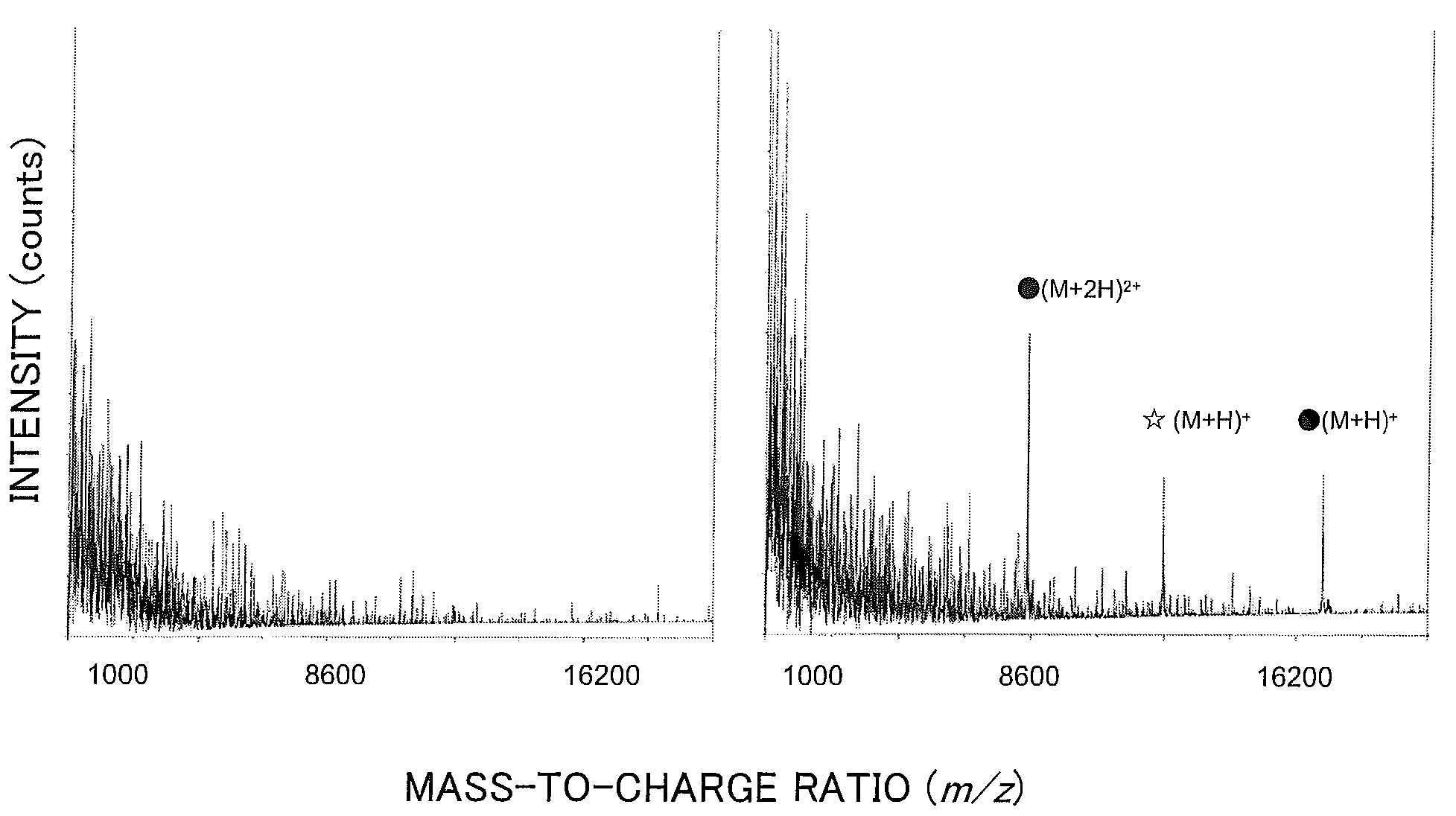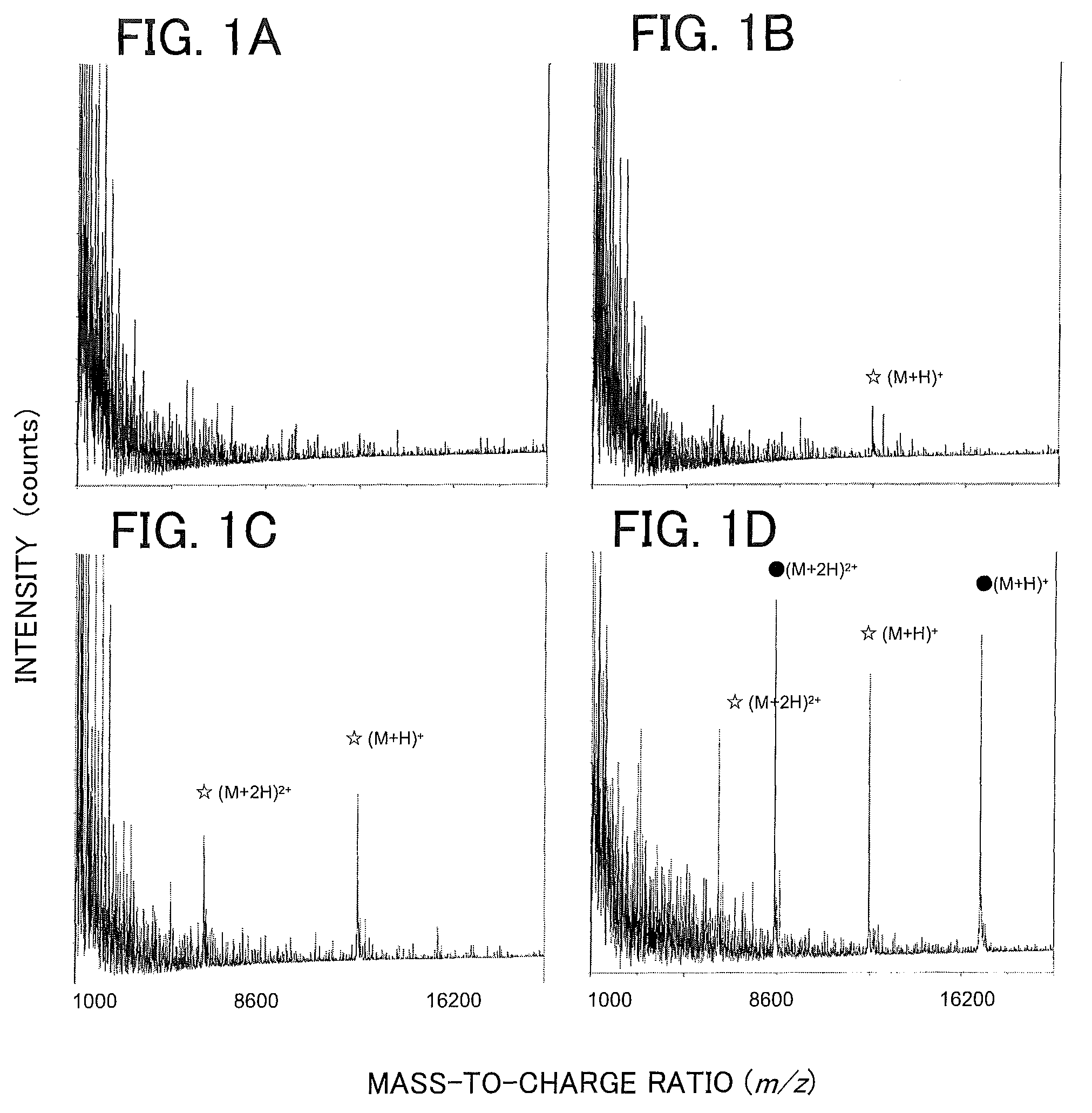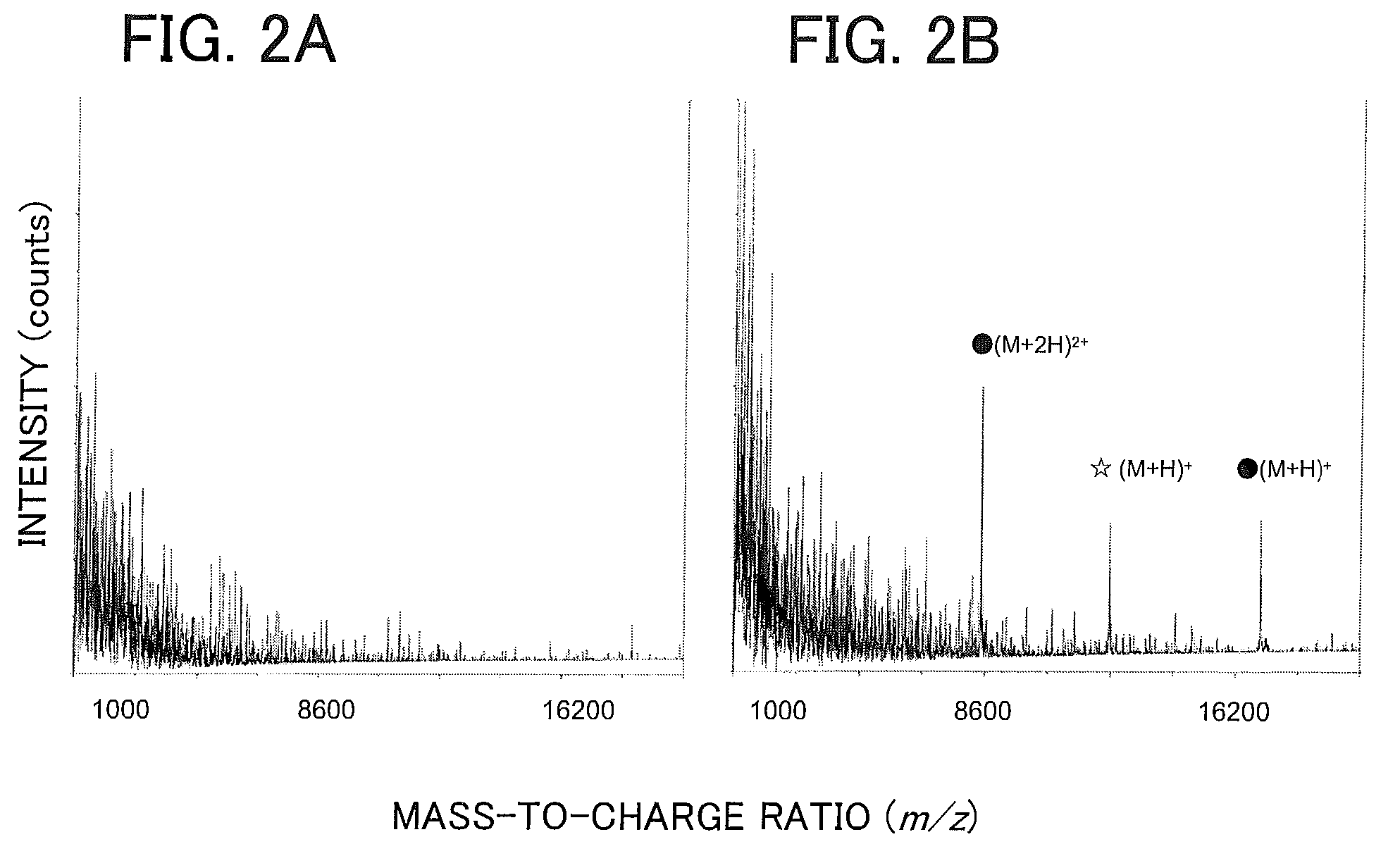Methods of preparing samples for MALDI mass spectrometry and reagent compositions for the same
a mass spectrometry and sample technology, applied in the direction of dispersed particle separation, instruments, separation processes, etc., can solve the problems of reducing analytical accuracy, reducing sensitivity, and not only laborious and time-consuming, and achieves rapid measurement, high purity, and simple procedure
- Summary
- Abstract
- Description
- Claims
- Application Information
AI Technical Summary
Benefits of technology
Problems solved by technology
Method used
Image
Examples
example 1
(1) Reagents
[0036]A sinapinic acid is purchased from TOKYO CHEMICAL INDUSTRY CO., LTD (TCI, Tokyo), and recrystallized twice using acetonitrile and prepared a solution of 10 mg / ml in 50% aqueous acetonitrile with 0.1% TFA. Myoglobin and cytochrome c were purchased from Sigma Co., Ltd and employed in the experiments without further purification. A solid-phase particle used included a Wakogel (trade mark) LC-SAX-10H (10 μm granular quaternary ammonium group-modified silica gel, Wako Pure Chemical, Osaka), Nucleosil (trade mark) 100-SB10 (10 μm spherical quaternary ammonium group-modified silica gel, GL-Science, Tokyo), Partisil (trade mark) 10 SCX (10 μm granular sulfonate group-modified silica gel, GL-Science, Tokyo), Partisil (trade mark) 10 (10 μm granular silica gel, GL-Science, Tokyo), Nucleosil (trade mark) 100-SB5 (5 μm spherical quaternary ammonium group-modified silica gel, GL-Science, Tokyo), TOYOPEARL Super Q-650S (20 to 50 μm spherical quaternary ammonium group-modified vi...
PUM
 Login to View More
Login to View More Abstract
Description
Claims
Application Information
 Login to View More
Login to View More - R&D
- Intellectual Property
- Life Sciences
- Materials
- Tech Scout
- Unparalleled Data Quality
- Higher Quality Content
- 60% Fewer Hallucinations
Browse by: Latest US Patents, China's latest patents, Technical Efficacy Thesaurus, Application Domain, Technology Topic, Popular Technical Reports.
© 2025 PatSnap. All rights reserved.Legal|Privacy policy|Modern Slavery Act Transparency Statement|Sitemap|About US| Contact US: help@patsnap.com



